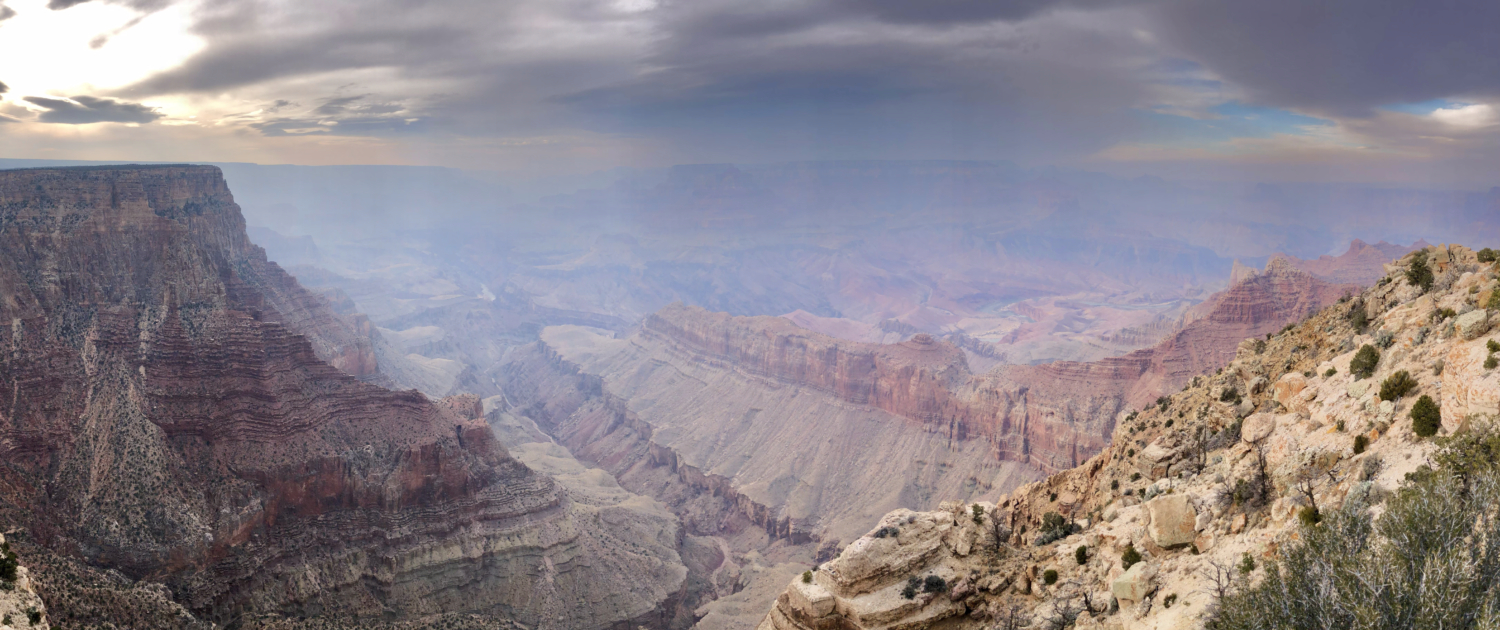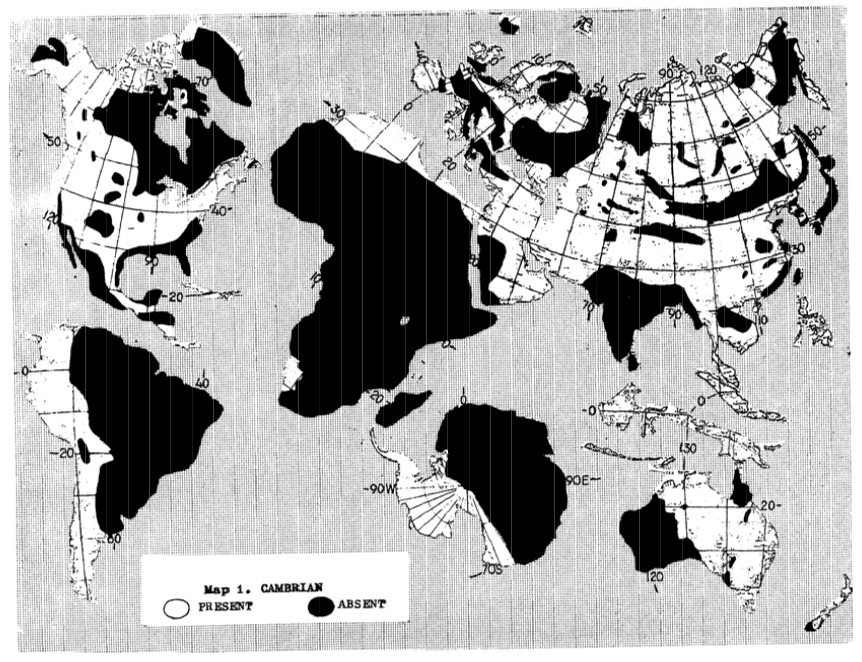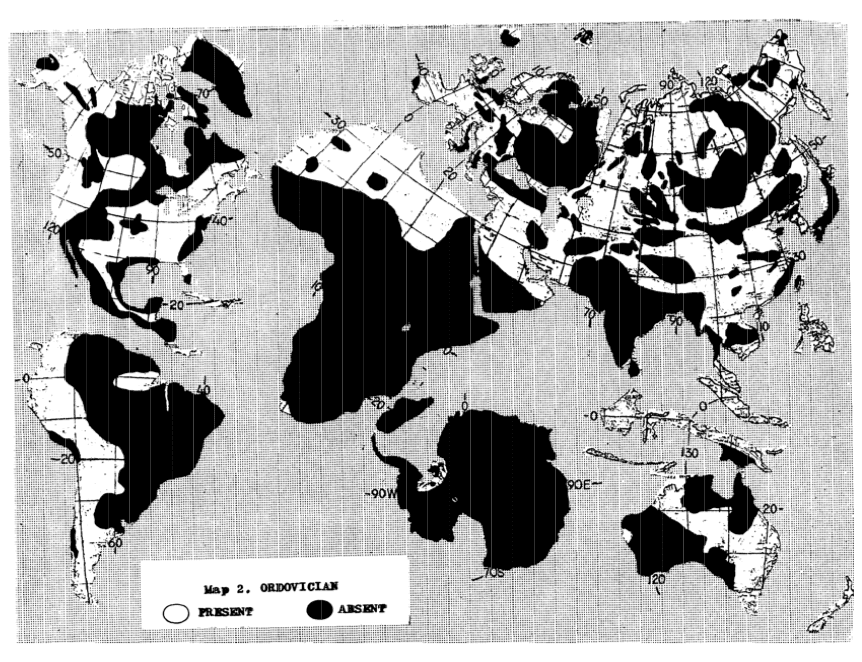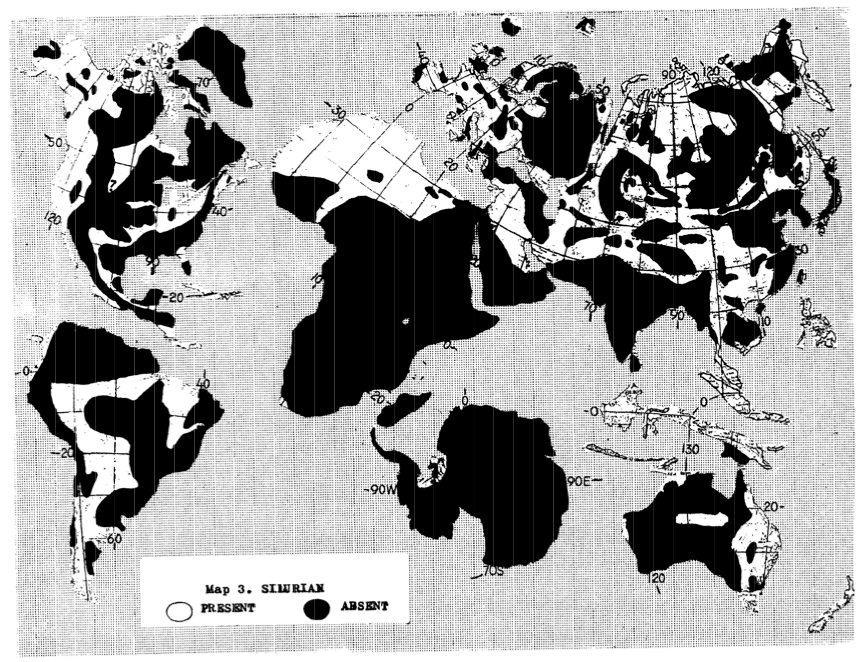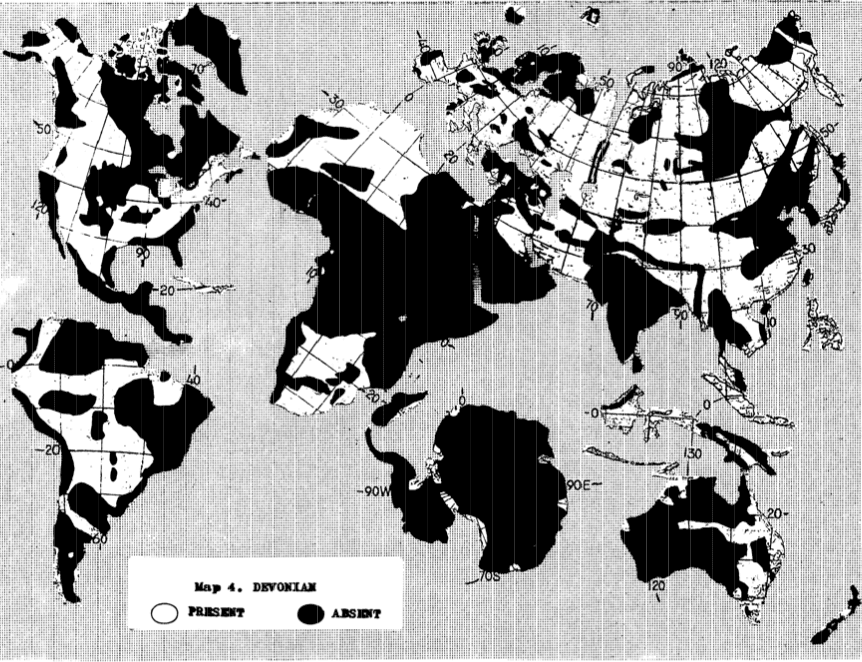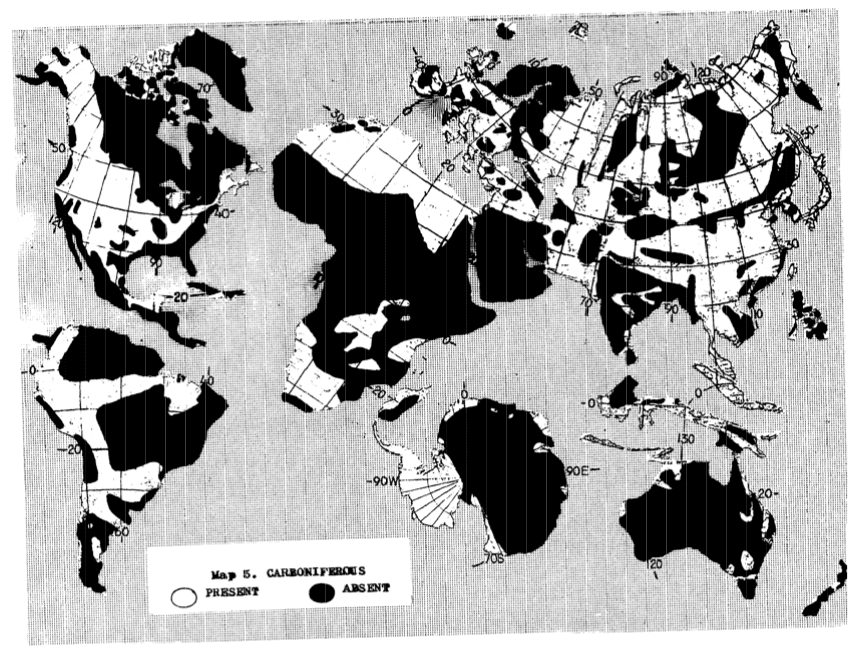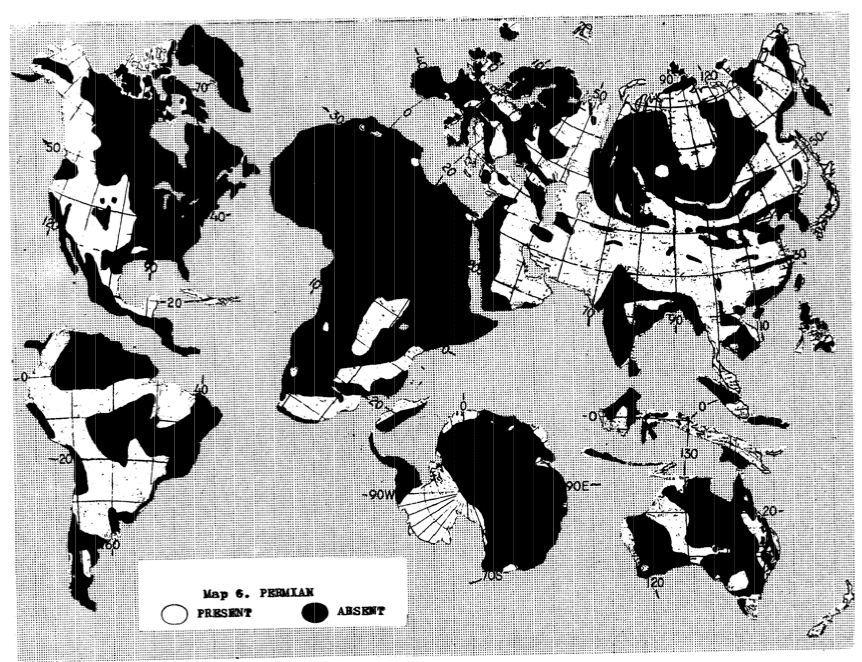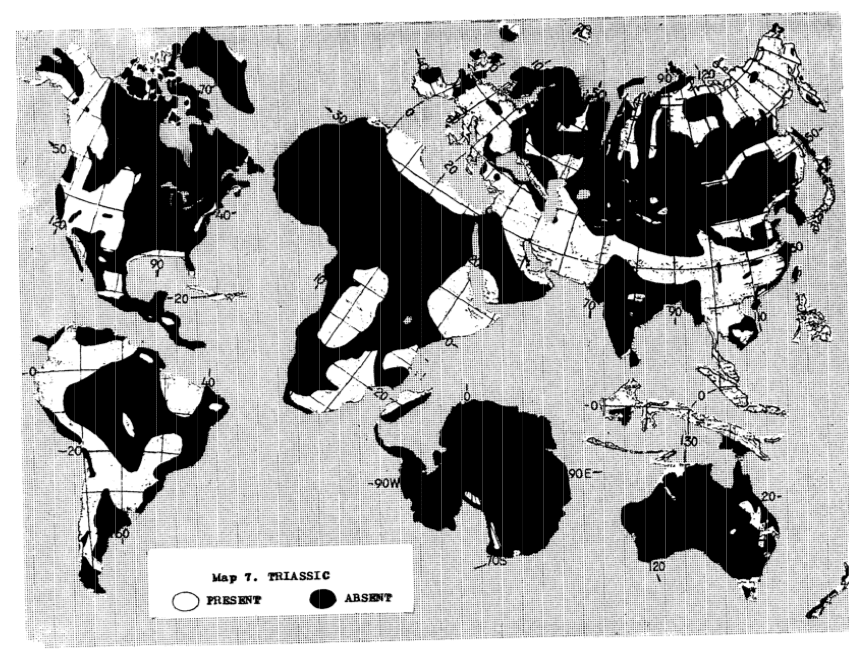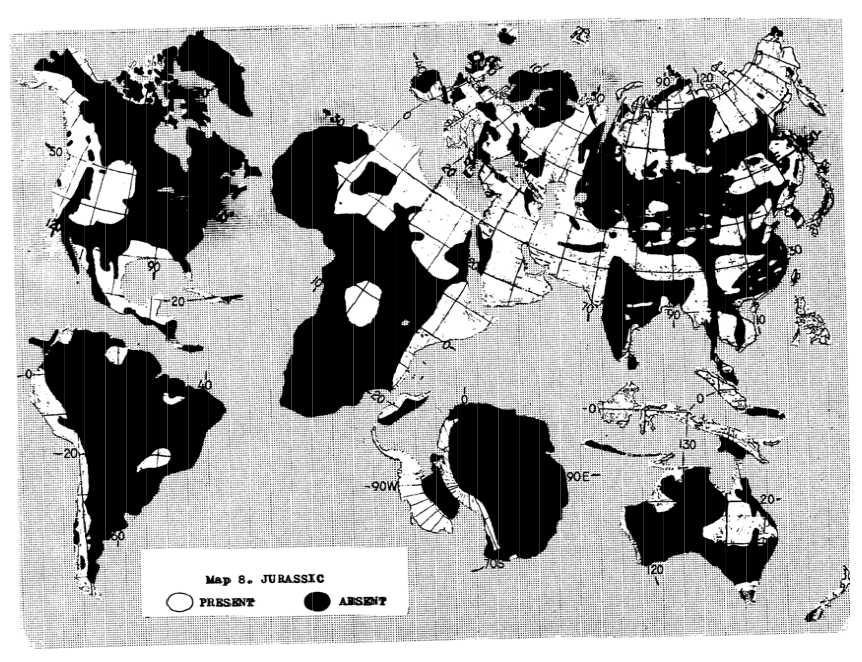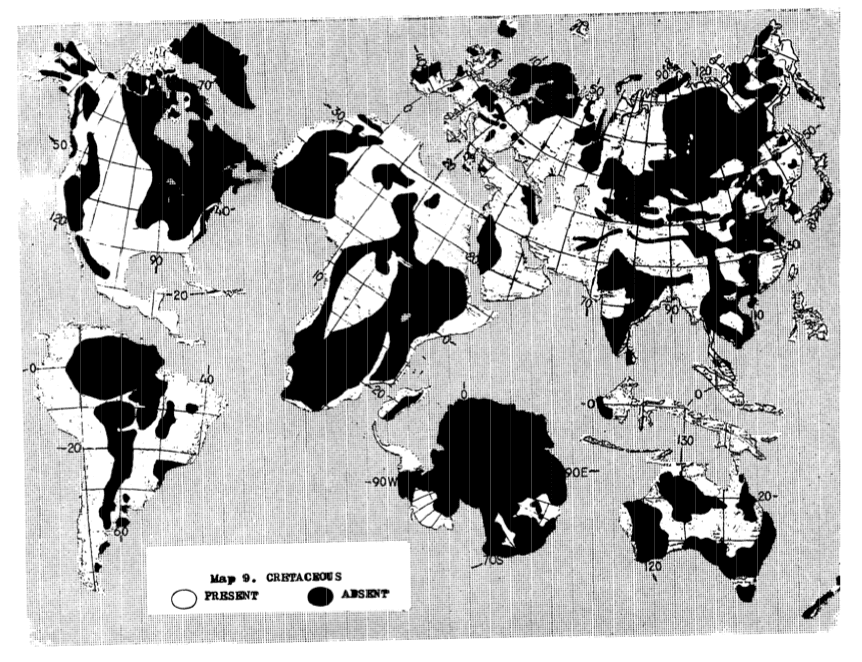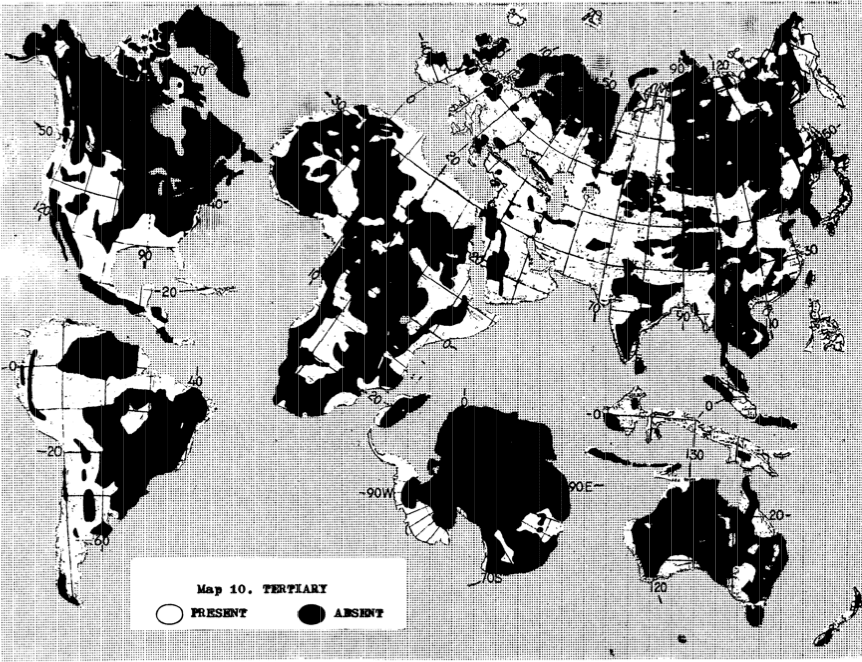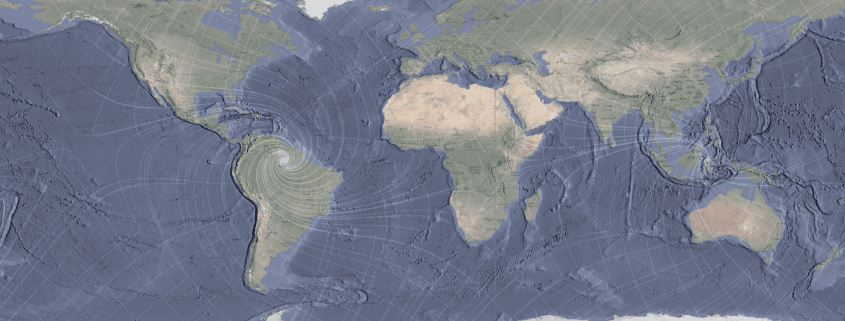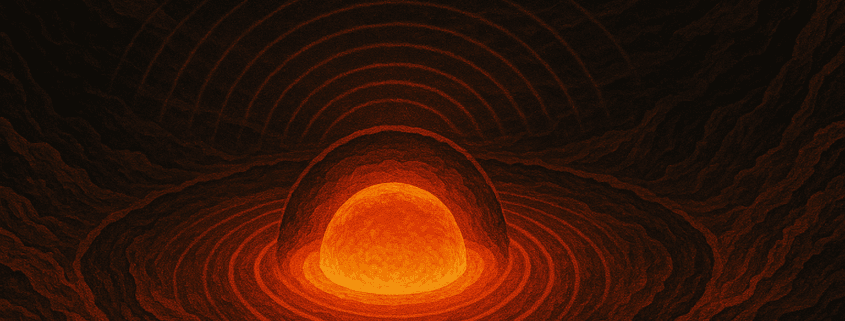Abstract
For those familiar with the ECDO framework, this article compiles evidence of the ~12,900-year cataclysm that unleashed global oceanic displacement and electrical discharges, disrupting Earth’s geological record. Marine fossils at the Grand Canyon’s 7,000-foot elevation indicate a trans-Rockies flood1, while vitrified sands at Giza reveal ionospheric activity intensified by saltwater conductivity2. Siberia’s permafrost holds megafauna remains—mammoth and bison—buried rapidly during this event6, and salt deposits near the Dead Sea reflect sustained hypersalinity from the inundation3. Marble Canyon’s hydraulic sorting supports violent deposition tied to a 104° rotational shift1. A quantitative global survey further reveals that two-thirds of Earth’s land surface has five or fewer geologic periods, with only 15–20% showing three in consecutive order, undermining uniformitarian assumptions and favoring a cataclysmic origin for these strata (Woodmorappe, 1981)4. As Earth’s magnetic field weakens in June 2025, with the South Atlantic Anomaly expanding and the North Magnetic Pole shifting toward Siberia (European Space Agency, 2024)5, we face potential recurrence. This analysis reinforces the ECDO’s impact, aligns with ancient accounts from Noah to Vishnu6, urging a reevaluation of Earth’s history.
Introduction
The ~12,900-year Exothermic Core-Mantle Decoupling – Dzhanibekov Oscillation (ECDO) event remains a cornerstone for understanding Earth’s geological and historical disruptions, a cataclysm that defies the gradualist lens of uniformitarian geology. For those acquainted with this framework, the evidence speaks clearly: a 104° rotational flip unleashed oceanic surges and ionospheric discharges, leaving a global imprint of chaos. In the Grand Canyon, marine fossils at 7,000 feet elevation reveal a trans-Rockies flood that defies conventional timelines (KML file exclusively-marine-fossils-1000.kml, 2025)1. At Giza, vitrified sands and fulgurites testify to intense electrical activity, amplified by saltwater conductivity during a Mediterranean surge to 811 feet (The Ethical Skeptic, 2023)2. Siberia’s permafrost entombs megafauna—mammoth and bison—buried rapidly in a scene of violent upheaval, as documented in Alaskan muck deposits packed with fragmented remains (Stone, 2022)6.
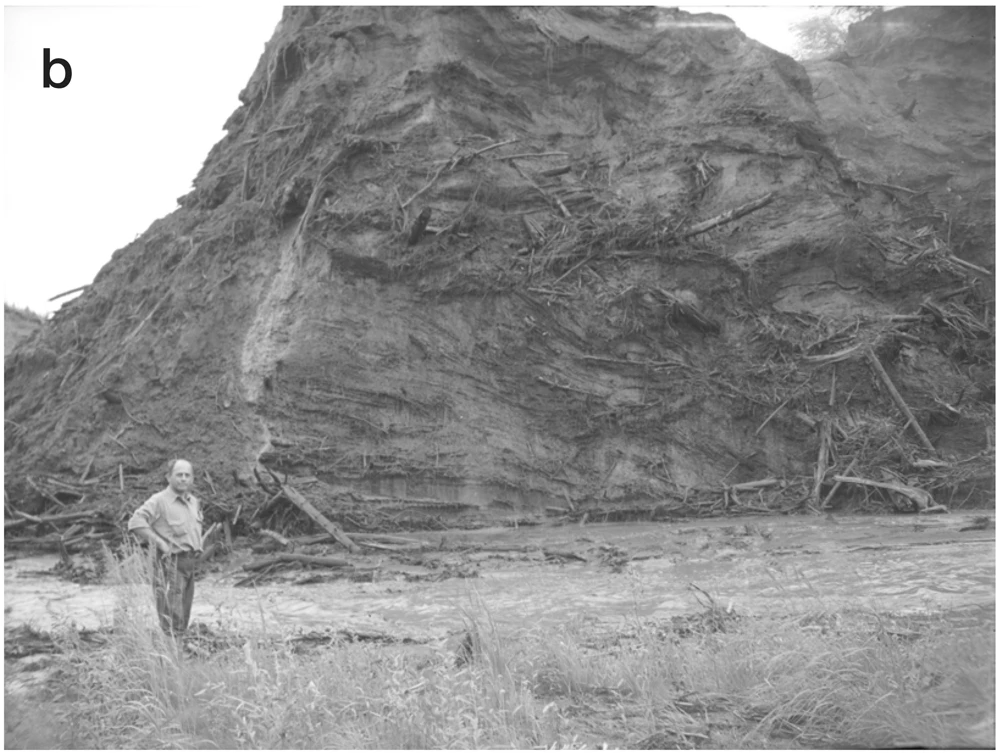
Figure 1: Photograph of Alaskan muck exposure showing chaotically dispersed fragments of trees, plants, and animals in frozen silt, illustrating rapid burial.
Salt deposits near the Dead Sea, marking sustained hypersalinity, align with this inundation, as do the hydraulically sorted razor clam fossils at Marble Canyon, evidencing high-energy deposition (KML file salt-lakes-and-pans.kml, 2025; KML file exclusively-marine-fossils-1000.kml, 2025)31. A quantitative survey further undermines the evolutionary-uniformitarian geologic column: two-thirds of Earth’s land surface hosts five or fewer geologic periods, with only 15–20% showing three in consecutive order, suggesting a cataclysmic, not gradual, formation of global strata (Woodmorappe, 1981)4.
These findings, spanning continents and corroborated by ancient accounts from Noah to Vishnu, challenge the deep-time narrative upheld by uniformitarian geology. The ECDO event’s fingerprints—flood deposits, electrical scars, and stratigraphic anomalies—point to a singular, rapid catastrophe, not millions of years of gradual change. As Earth’s magnetic field weakens in June 2025, with the South Atlantic Anomaly expanding and the North Magnetic Pole accelerating toward Siberia, we confront signs of a potential recurrence (European Space Agency, 2024)5. This article synthesizes these global signatures to reaffirm the ECDO’s transformative impact, reevaluate Earth’s historical timeline, and assess the implications of current geomagnetic trends for future cataclysmic events.
Section 1: The ECDO Hypothesis – A New Lens on Earth’s History
The Exothermic Core-Mantle Decoupling Oscillation (ECDO) hypothesis offers a transformative framework for interpreting Earth’s geological and historical record, positing that periodic cataclysms driven by rotational dynamics and geomagnetic disruptions have shaped the planet’s surface and biosphere. For those familiar with this model, the ECDO event ~12,900 years ago involved a 104° rotational flip triggered by a gravitational null point, likely induced by solar system barycenter crossings, as suggested by historical alignments of celestial bodies 6. This flip, governed by the Intermediate Axis Theorem and Prandtl rotational instability, caused non-uniform oceanic displacement, with Pacific surges flooding the Grand Canyon region and Mediterranean waters inundating Giza to 800 feet elevation1. The resulting chaos, compounded by ionospheric discharges amplified by saltwater conductivity, left global signatures, from marine fossils at 7,000 feet in the Grand Canyon to vitrified sands at Giza, and rapid megafauna burials in Siberia’s permafrost.
Central to the ECDO hypothesis is its periodicity, with cycles of ~3700, ~1850, and ~925 years driven by gravitational tidal forces, as evidenced by historical cataclysms like the destruction of Tall el-Hammam (~1650 BCE) during a Venus-Mars alignment, which produced a 1.5-meter-thick destruction layer with melted spherules indicative of a possible plasma discharge event6. The ~12,900-year event aligns with a major cycle, marked by geomagnetic excursions and sharp C-14 increases7. Chan Thomas’s heliocentric cataclysm theory supports this periodicity, suggesting Earth’s passage through galactic magnetic null zones weakens its magnetohydrodynamic (MHD) energy, allowing the outer molten layer to lubricate a crustal shift, as seen in the rapid ice cap displacement during such events6.
The global stratigraphic record further supports this cataclysmic lens. Woodmorappe’s quantitative assessment reveals that two-thirds of Earth’s land surface has five or fewer geologic periods, with only 15–20% showing three in consecutive order, contradicting the uniformitarian geologic column’s deep-time narrative (Woodmorappe, 1981)4. Instead, these strata reflect a singular, rapid depositional event, consistent with the ECDO’s oceanic surges and electrical activity. The shift from submarine to subaerial volcanism from Paleozoic to Mesozoic, noted in global lithologic trends, aligns with late-Flood conditions during State 2 (50–1,000 years) of the ECDO event, where isostatic adjustments sustained flooding and facilitated rapid fossilization, as seen in Marble Canyon’s hydraulically sorted razor clam example1.
Ancient accounts, from Noah’s deluge to Vishnu’s flood, corroborate this event, embedding cultural memories of a global catastrophe that uniformitarian science dismisses as myth. The ECDO hypothesis thus reframes Earth’s history as a series of abrupt, cataclysmic resets, challenging gradualist assumptions and urging a reevaluation of geological and archaeological timelines. As we explore the evidence in subsequent sections, the ECDO’s role in driving non-uniform oceanic displacement, geomagnetic chaos, and electrical phenomena emerges as a critical lens for understanding Earth’s past—and its potential future.
Section 2: Evidence of a Global Saltwater Inundation
The ~12,900-year ECDO event unleashed a global saltwater inundation, a hallmark of its 104° rotational flip, as oceans surged across continents, leaving marine fossils, salt deposits, and hydraulic sorting as enduring signatures. This section examines these markers across key sites, revealing a cataclysmic flood that defies uniformitarian timelines. The KML datasets compiled by @JuhnoBTC provide coordinates for marine fossils and salt deposits, mapping the extent of this deluge across the Grand Canyon, Giza Plateau, Siberia, Alaska, South America, and the Dead Sea/Rann of Kutch regions, while stratigraphic data further supports a rapid depositional event 13.
In the Grand Canyon and Marble Canyon region, marine fossils lie at elevations of 3,500–7,000 feet, far inland from current coastlines and separated by the Rocky Mountains (10,000–14,000 feet) 1. Trilobites, brachiopods, and crinoids in the Kaibab and Redwall Limestones, alongside razor clam fossils at Marble Canyon showing hydraulic sorting (coarser grains at the bottom), indicate a high-energy Pacific surge over the Rockies, depositing marine organisms in a single event, not over millions of years as uniformitarian models claim 1. The Great Salt Lake region suggests prolonged saline conditions sustained by Isostatic depression during State 2 (50–1,000 years) of an ECDO event, where crustal adjustments trapped floodwaters 3.
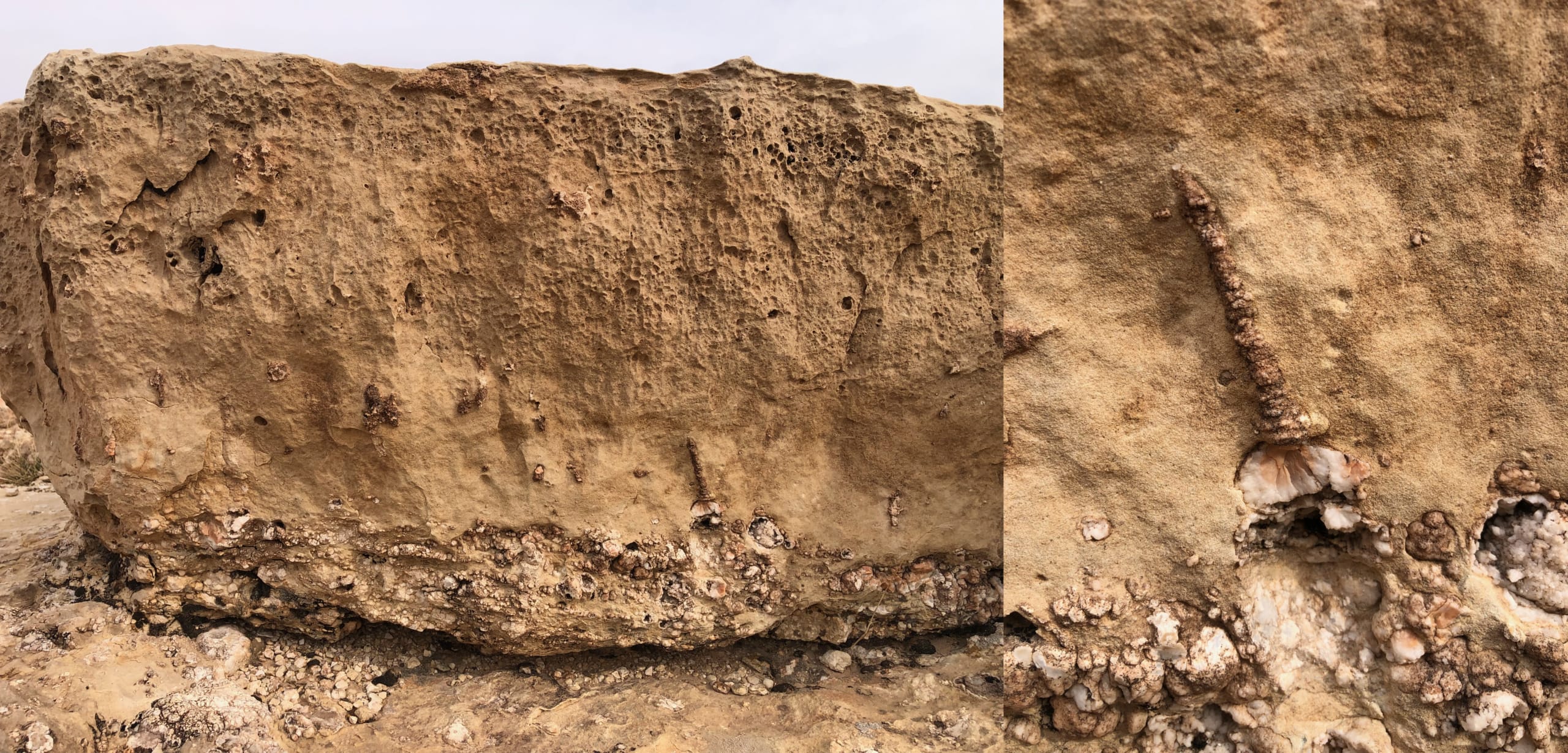
Figure 2: Photographs of razor clam fossil on the rim of Marble Canyon AZ, showing hydraulic sorting with coarser grains at the bottom, indicative of high-energy deposition.
At the Giza Plateau, marine fossils and salt deposits at align with a Mediterranean surge reaching 811 feet elevation, as evidenced by salt incrustations on the Great Pyramid (The Ethical Skeptic, 2023)2. This inundation, driven by the ECDO’s rotational dynamics, saturated the region with conductive saltwater, amplifying ionospheric discharges that vitrified local sands, a phenomenon absent in the Grand Canyon due to mineralogical differences (e.g., less free silica in Kaibab Limestone). The hypersalinity near the Dead Sea and Rann of Kutch, where salt deposits mark lesser ECDO subcycles (~1850 years) around 1700 BCE, further supports widespread oceanic displacement, impacting ancient civilizations like those near Tall el-Hammam, where a plasma event left a 1.5-meter-thick destruction layer with melted spherules 63.
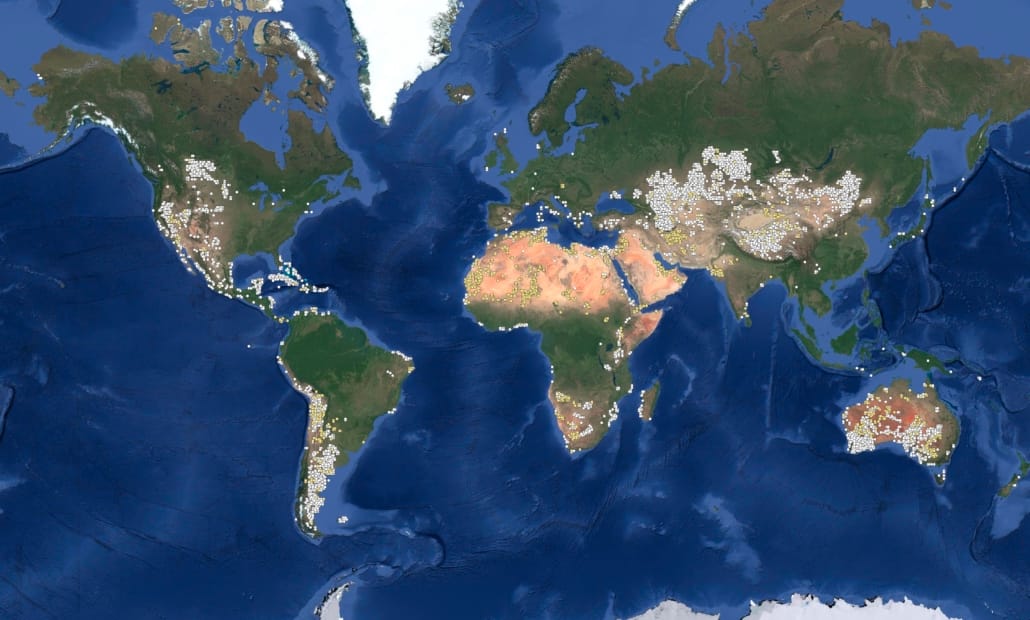
Map 11: Distribution of salt pans (yellow) and deposits (white).
Megafauna burial sites in Siberia, Alaska, and South America reveal the global reach of this flood. In Siberia, mammoth and bison remains are packed in frozen muck, described as a “grim charade” of quick extinction, with bones chaotically dispersed alongside trees and plants, indicating rapid burial by Arctic tsunamis6. A salt deposit in Siberia reflects sustained saline conditions, mirroring the Great Salt Lake pattern. Similar rapid burials in Alaska and South America, driven by Pacific surges, align with the ECDO’s non-uniform oceanic displacement, where rotational forces displaced oceans unevenly across hemispheres31.
Woodmorappe’s stratigraphic analysis bolsters this cataclysmic interpretation, showing that two-thirds of Earth’s land surface has five or fewer geologic periods, with only 15–20% exhibiting three in consecutive order, suggesting a singular depositional event rather than a deep-time continuum4. The shift from submarine to subaerial volcanism from Paleozoic to Mesozoic, noted in global lithologic trends, aligns with late-Flood conditions during the ECDO’s State 2, where floodwaters receded, and new ice caps formed, raising sea levels by ~200 feet as 8 million cubic miles of ice melted, per Chan Thomas’s estimates6. This rapid deposition and Isostatic adjustment explain the global distribution of marine fossils and salt, challenging uniformitarian assumptions and affirming the ECDO’s transformative impact.
Section 3: Electrical Activity During the Cataclysm
The ~12,900-year ECDO event not only unleashed a global saltwater inundation but also triggered widespread electrical activity, driven by geomagnetic disruptions and amplified by the conductive floodwaters. This section examines the mechanisms of this activity—plasma arcs, ground currents, and electrostatic erosion—and their signatures at Marble Canyon, Giza/Sahara, and megafauna burial sites in Siberia and South America. The event’s electrical phenomena, tied to a weakened magnetic field during a galactic null zone passage, align with historical plasma discharge events and challenge uniformitarian interpretations of Earth’s geological record6.
During the ECDO cataclysm, Earth’s passage through a galactic magnetic null zone reduced its magnetohydrodynamic (MHD) energy, weakening the magnetic field to potentially less than 10% of its current strength, as inferred from paleomagnetic records of geomagnetic excursions ~12,500 BC (Stone, 2025)7. This allowed increased cosmic ray flux, enhancing ionospheric ionization and facilitating ground-to-ionosphere discharges, such as gigantic jets and sprites, by an estimated 50–100% compared to modern rates6. The global saltwater inundation, with conductivity of ~4 S/m, further amplified these discharges by reducing ground resistance, as seen in historical events like the Tunguska Event (1908), where a plasma discharge during a solar cycle peak and planetary alignment left silicate and magnetite spherules—akin to “welding splatter”—across the Arctic Circle6.
At Marble Canyon, a radial erosive formation on the rim, observed at coordinates -112.089996, 36.209999, exhibits patterns consistent with plasma arc etching, resembling Lichtenberg figures formed by electrical discharges. The absence of vitrification or fulgurites, unlike at Giza, likely stems from mineralogical constraints—Marble Canyon’s Kaibab Limestone and Coconino Sandstone lack sufficient free silica for glass formation—and a deeper water table post-flood, reducing conductivity after the initial surge. The formation’s tafoni weathering further suggests electrochemical pitting by ground currents in saline sediments, a process amplified during the ECDO’s State 2 (50–1,000 years), when floodwaters lingered due to Isostatic depression.
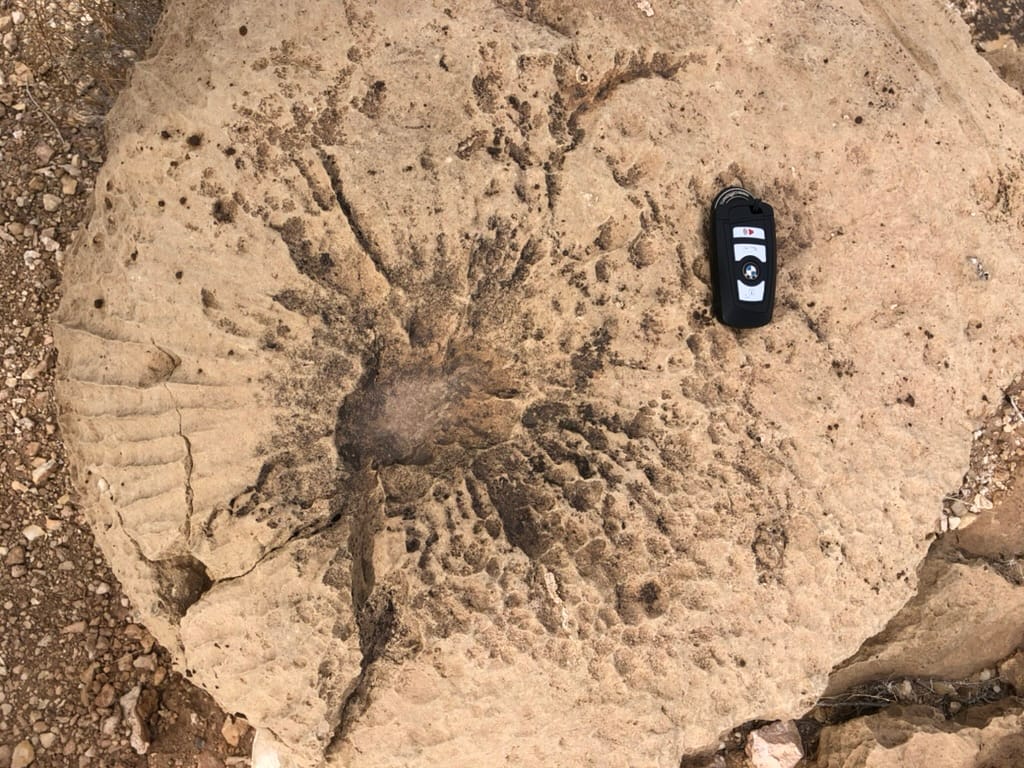
Figure 3: Photograph of the radial erosive formation at Marble Canyon, with a car key fob for scale, showing patterns consistent with potential plasma arc etching.
In contrast, the Giza Plateau and broader Sahara region preserve abundant vitrification and fulgurites, reflecting intense electrical activity. The shallow water table and silica-rich sands, saturated by a Mediterranean surge to 800 feet, provided ideal conditions for plasma discharges to melt silica into glass, as evidenced by fulgurites along the 31st meridian east, a potential focal point for discharges during the ECDO flip axis alignment (The Ethical Skeptic, 2023)2. Historical parallels, such as the destruction of Tall el-Hammam (~1650 BCE), where a plasma airburst produced temperatures exceeding 2000°C and left Fe- and Si-rich spherules, underscore the destructive potential of such events, amplified by conductive floodwaters 6.
Megafauna burial sites in Siberia and South America also bear electrical signatures. In Siberia, mammoth and bison remains in frozen muck show signs of electrochemical erosion, with bones fragmented and dispersed chaotically, suggesting ground currents in saline floodwaters facilitated rapid mineral precipitation, aiding fossilization6. Similar patterns in South America align with Pacific surges, where electrical activity likely contributed to rapid burial, though permafrost preservation in Siberia obscures vitrification evidence. The presence of Birkeland currents, as noted in modern auroral activity near these Arctic sites, supports the hypothesis of ionospheric discharges during the ECDO event, potentially etching subtle patterns now eroded or buried (Stone, 2022)6.
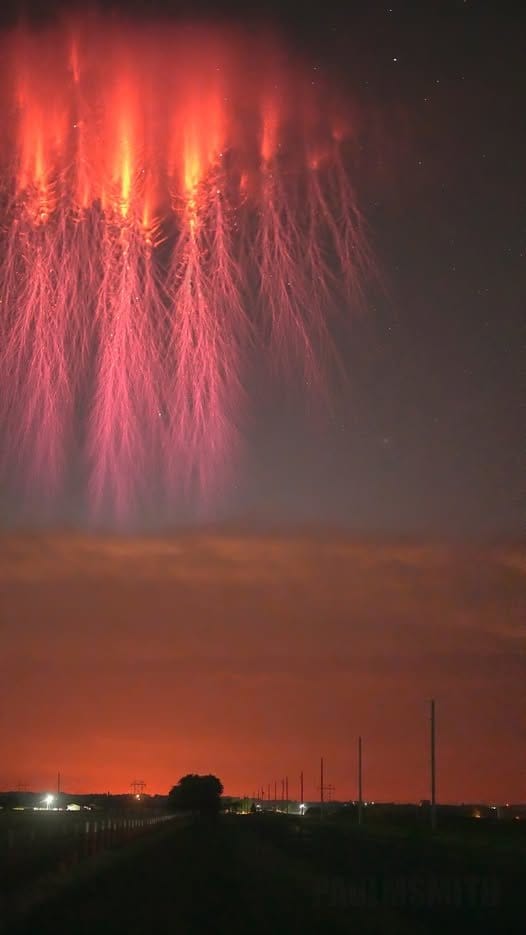
Red Sprites, Texas, 22 May 2025 (Oppenheimer Ranch)
These electrical signatures, varying regionally due to mineral composition and water table depth, align with the ECDO’s anticipated geomagnetic chaos and saltwater amplification. They challenge uniformitarian models, which attribute such features to millions of years of gradual processes, and instead point to a singular cataclysmic event, reshaping our understanding of Earth’s geological and biological history.
Section 4: Unreliable Dating and Timeline Compression
Conventional dating methods, rooted in uniformitarian assumptions, falter when applied to the ~12,900-year ECDO event, as geomagnetic disruptions, rapid deposition, and isotopic anomalies compress Earth’s timeline into a cataclysmic framework. This section examines these flaws, drawing on paleomagnetic records, stratigraphic data, and historical cataclysms to challenge deep-time narratives and affirm the ECDO’s role in reshaping geological and archaeological chronologies. The evidence reveals a history punctuated by abrupt events, not gradual processes, aligning with ancient accounts of global upheaval6.
Geomagnetic excursions during the ECDO event, such as those at ~12,500 BC, sharply increased C-14 levels, skewing radiocarbon dating. Tempus Fugit documents a significant C-14 anomaly coincident with Firestone’s irradiation event, where atmospheric heating to 1000°C and neutron flux altered isotopic ratios, making sites like Gainey, Michigan, appear 10,000 years younger than their true age 7. This disruption, driven by Earth’s passage through a galactic magnetic null zone, weakened the magnetic field to less than 10% of its current strength, as seen in historical excursions like the Laschamp event (~41,000 years ago), increasing cosmic ray flux and further distorting isotopic decay rates6. Such anomalies render C-14 dating unreliable for ECDO-affected strata, as evidenced by Grand Canyon fossils conventionally dated to the Paleozoic (~300 Ma) but likely deposited during the ~12,900-year event1.
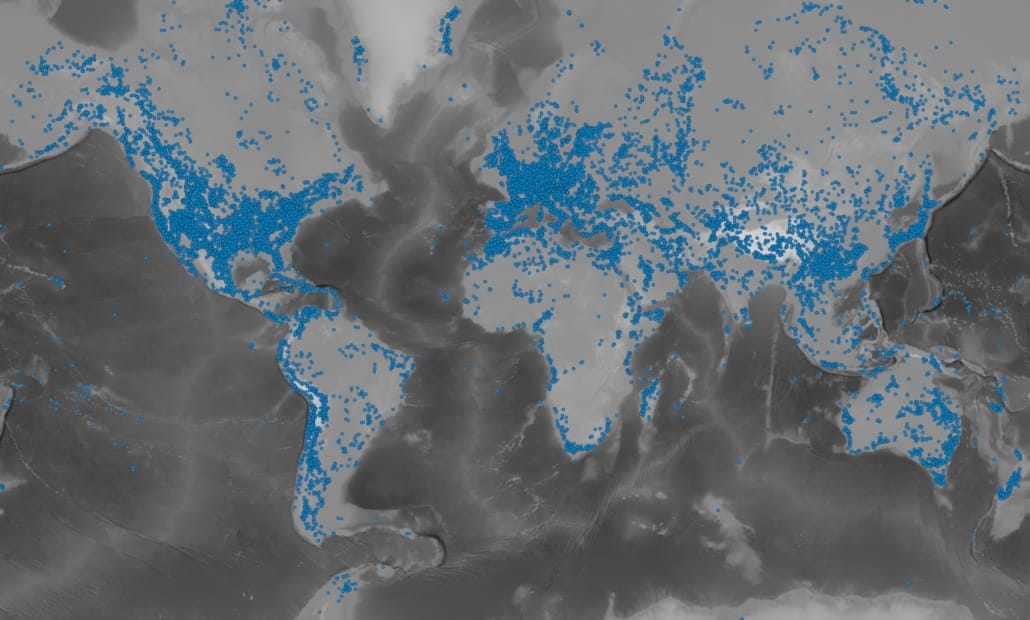
Map 12: Global marine fossil finds. @JuhnoBTC (2025)
Radiometric methods like K-Ar dating also fail under ECDO conditions. Tempus Fugit cites the 1801 AD Hawaiian lava flow, dated at 160 million years, highlighting how rapid cooling and open-system behavior during cataclysmic events skew results7. The ECDO’s rotational dynamics and oceanic surges caused rapid deposition, as seen in Marble Canyon’s hydraulically sorted razor clams, which uniformitarian models misattribute to millions of years of sedimentation1. Woodmorappe’s analysis further undermines deep-time dating, revealing that two-thirds of Earth’s land surface has five or fewer geologic periods, with only 15–20% showing three in consecutive order, suggesting a singular depositional event rather than a gradual continuum over hundreds of millions of years (Woodmorappe, 1981)4.
Historical cataclysms corroborate this timeline compression. The destruction of Tall el-Hammam (~1650 BCE), marked by a plasma airburst with temperatures exceeding 2000°C, aligns with a Venus-Mars conjunction and produced a 1.5-meter-thick destruction layer conventionally dated to ~3600 years ago, yet its rapid formation mirrors the ECDO’s effects, suggesting similar mechanisms at play during lesser subcycles (~1850 years)6. Ancient accounts, such as the biblical flood of Noah and Vishnu’s deluge, embed cultural memories of the ~12,900-year event, often dated to ~9500 BC in traditional chronologies but likely reflecting the same cataclysm, as discrepancies in BC dating (e.g., Sennacherib’s army destruction ~687 BCE) show calendar uncertainties of a few years6.
The ECDO’s rapid geological processes—oceanic surges, electrical discharges, and Isostatic adjustments—compressed what uniformitarian models interpret as millions of years into a brief cataclysmic window. The Green River Formation’s fish fossils, preserved in exquisite detail, exemplify rapid burial under ECDO conditions, not slow sedimentation, as argued in Tempus Fugit7. This compressed timeline, supported by stratigraphic, isotopic, and cultural evidence, challenges the evolutionary-uniformitarian paradigm, urging a reevaluation of Earth’s history as a series of abrupt, cataclysmic resets rather than a gradual unfolding over deep time.
Section 5: Magnetic Field Weakening as a Precursor
As of June 6, 2025, Earth’s magnetic field is undergoing significant weakening, with the South Atlantic Anomaly (SAA) expanding and the North Magnetic Pole accelerating toward Siberia, raising concerns of a potential precursor to an ECDO-like event. This section examines these trends, drawing parallels to the geomagnetic disruptions of the ~12,900-year cataclysm, where a weakened magnetic field amplified ionospheric discharges and facilitated global upheaval. Historical plasma events and modern data underscore the risks, urging preparedness for a possible recurrence of the cataclysmic forces that reshaped Earth’s geological record6.
Recent data from the European Space Agency’s Swarm satellites, updated through 2024, indicate that Earth’s magnetic field has weakened by ~5% per century since the 19th century, with the SAA—a region of low field strength over the South Atlantic—expanding and weakening by ~7% over the past decade (European Space Agency, 2024)5. Concurrently, the North Magnetic Pole has accelerated its migration from Canada toward Siberia, moving at a rate unprecedented in recent history, as reported by contemporary geophysical studies (ScienceAlert, 2025)8. This weakening mirrors the conditions described in The Perfect Storm, where Earth’s passage through a galactic magnetic null zone during the ~12,900-year ECDO event reduced the field to less than 10% of its current strength, a state also observed during historical excursions like the Laschamp event (~41,000 years ago)6.
A weakened magnetic field increases cosmic ray flux by ~10% per 1% decrease in field strength, enhancing ionospheric ionization and elevating the frequency of ground-to-ionosphere discharges, such as sprites and gigantic jets, by ~10–15% under current conditions6. During the ECDO event, with the field potentially at <10% strength, discharge frequency likely surged by 50–100%, as inferred from models of transient luminous events (TLEs) and historical plasma discharges like the Tunguska Event (1908), which occurred during a solar cycle peak and planetary alignment, leaving silicate spherules across the Arctic Circle6. These discharges, amplified by saltwater conductivity during the ECDO flood, etched radial patterns at Marble Canyon and vitrified sands at Giza, as previously discussed.
Historical cataclysms linked to geomagnetic excursions further illustrate the risks. The destruction of Tall el-Hammam (~1650 BCE), coincident with a Venus-Mars alignment, produced a plasma airburst with temperatures exceeding 2000°C, mirroring the electrical signatures of the ECDO event and suggesting a recurring pattern tied to field weakening6.
The current magnetic field weakening, if a precursor to an ECDO-like event, could exacerbate electrical activity and oceanic displacement, as seen ~12,900 years ago. The forces that drove global cataclysm – geomagnetic chaos, ionospheric discharges, and rotational dynamics – may be reemerging, challenging modern society to prepare for a potential repeat of Earth’s cataclysmic past.
Section 6: Implications and Future Directions
The ECDO hypothesis fundamentally reshapes our understanding of Earth’s history, shifting the paradigm from uniformitarian gradualism to a series of cataclysmic resets, as evidenced by global marine fossils, electrical signatures, and stratigraphic anomalies. This section explores the implications for geological and archaeological interpretations, the impact on ancient civilizations, and the risks posed by current geomagnetic trends as of June 6, 2025, while recommending future research to deepen our grasp of these transformative events and prepare for potential recurrences6.
Geologically, the ECDO framework, supported by Woodmorappe’s finding that only 15–20% of Earth’s land surface shows three consecutive geologic periods, demands a rejection of deep-time models in favor of rapid, cataclysmic deposition4. Marine fossils at the Grand Canyon’s 7,000-foot elevation and rapid megafauna burials in Siberia’s permafrost, as seen in Alaskan muck exposures, indicate a singular event ~12,900 years ago, not millions of years of gradual sedimentation61.
Archaeologically, the ECDO event’s impact on ancient civilizations is profound. Hidden in Plain Sight suggests the Giza Plateau’s monuments, bearing salt incrustations from an 811-foot Mediterranean surge, predate the Fourth Dynasty (~2580 BCE), potentially re-purposed by survivors of the ~12,900-year cataclysm (The Ethical Skeptic, 2023)2. Cultural memories embedded in accounts like Noah’s flood and Vishnu’s deluge, alongside the destruction of Tall el-Hammam (~1650 BCE) by a plasma airburst, reflect a global awareness of such events, often dismissed as myth by conventional scholarship6. This suggests advanced societies may have existed prior to the ECDO, their legacies obscured by the cataclysm’s aftermath, necessitating new archaeological approaches to uncover pre-cataclysmic civilizations.
The current magnetic field weakening, with the South Atlantic Anomaly expanding and the North Magnetic Pole migrating toward Siberia as of June 2025, poses significant future risks.
Conclusion
This synthesis challenges the gradualist paradigm, urging a shift to catastrophic models that recognize Earth’s history as a series of abrupt resets, as echoed in ancient accounts. The implications extend to archaeology, suggesting advanced pre-cataclysmic civilizations at Giza, and to future risks, as the magnetic field weakens, with the South Atlantic Anomaly expanding and the North Magnetic Pole migration – potential precursors to an ECDO-like event. Such a recurrence could mirror the ~12,900-year cataclysm, with oceanic displacement and electrical activity.
A call to action is imperative. Interdisciplinary research must test the ECDO hypothesis further, uncovering pre-cataclysmic legacies and refining our understanding of geomagnetic risks. As we stand on the precipice of potential cataclysmic change, this work underscores the need to prepare for abrupt geological events, ensuring humanity is equipped to face a future where Earth’s violent past may repeat itself.
References
- ECDO Github Repository. Back to text
- The Ethical Skeptic. (2023). Hidden in Plain Sight: The Evidence for an Oceanic Inundation Event 12,900 Years Ago. Back to text
- KML file salt-lakes-and-pans.kml, coordinates 35.622916, 31.710416 (Dead Sea), -112.710416, 39.210416 (Great Salt Lake), 71.456250, 24.210416 (Rann of Kutch), 77.289583, 52.543750 (Siberia), documenting salt deposits. Back to text
- Woodmorappe, J. (1981). The essential nonexistence of the evolutionary-uniformitarian geologic column: A quantitative assessment. Creation Research Society Quarterly, 18. Back to text
- European Space Agency. (2024). Swarm satellite data on magnetic field weakening and North Magnetic Pole migration [Data set]. Back to text
- Stone, C. (2022). The Perfect Storm. nobulart. https://nobulart.com/the-perfect-storm/ Back to text
- Stone, C. (2025). Tempus Fugit. nobulart. https://nobulart.com/tempus-fugit/ Back to text
- ScienceAlert. (2025). The North Magnetic Pole’s Mysterious Journey Across the Arctic. https://www.sciencealert.com Back to text


